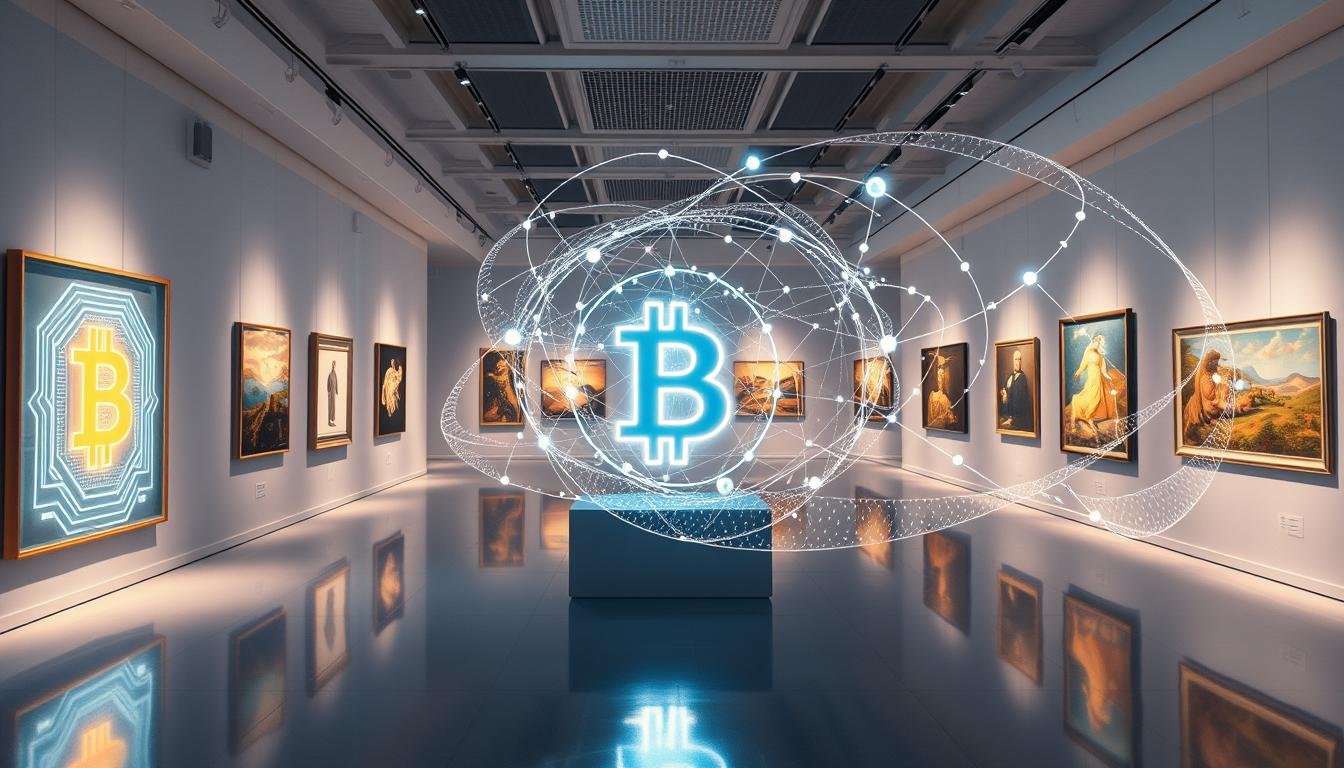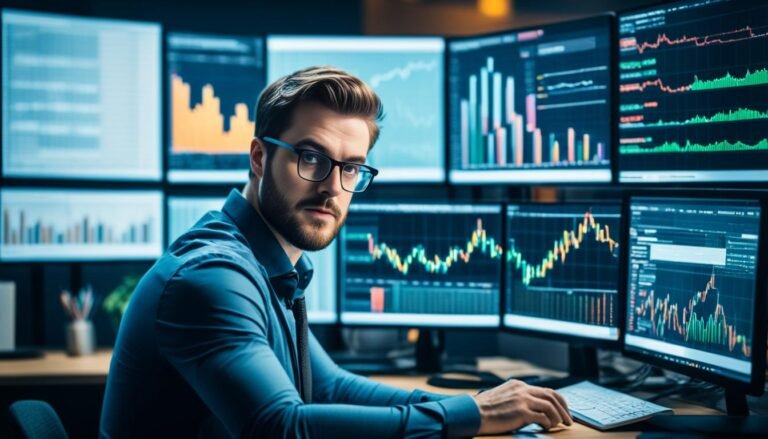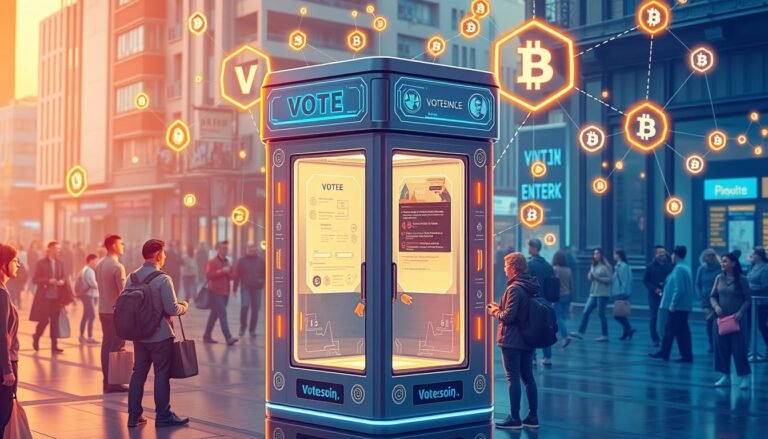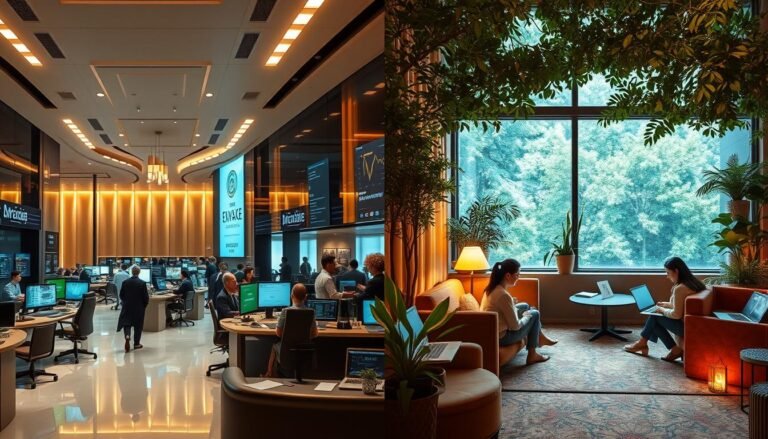Blockchain in Art: Provenance and Authenticity
Blockchain technology is changing the art and collectibles world. It solves old problems with provenance and authenticity. This tech makes a secure, clear record of an artwork’s history and sales. It’s a big change in how we see and value art and collectibles.
Blockchain helps solve the big issues of provenance and authenticity. These are big worries for collectors, galleries, and museums. It makes a safe, shared record of an artwork’s past. This helps fight art forgery and fraud, which affects up to 50% of art out there.
Non-Fungible Tokens (NFTs) have also changed digital art. They let artists make, sell, and trade unique digital items. This new way to prove art’s realness and ownership could change how we see digital art.
Key Takeaways
- Blockchain technology offers a secure, transparent, and tamper-proof record of an artwork’s ownership history and transactions, addressing long-standing issues of provenance and authenticity in the art world.
- Blockchain-based solutions can help combat the pervasive problem of art forgery and fraud, which experts estimate could impact up to 50% of the art in circulation.
- Non-Fungible Tokens (NFTs) are revolutionizing the digital art landscape, allowing artists to create, sell, and trade unique, blockchain-based digital assets that can aid in proving the authenticity and ownership of artworks.
- Blockchain can create a secure, transparent, and easily accessible record of an artwork’s provenance, enhancing trust among collectors and the art market.
- The integration of blockchain technology into the art world has the potential to transform the way we value and interact with art, both physical and digital.
The Blockchain Revolution in the Art and Collectibles Market
Blockchain technology is changing the art and collectibles world. It makes things like Crypto Art NFTs and the tokenization of physical assets possible. This opens up new chances for artists, collectors, and investors. It also solves old problems in the market.
Platforms like Verisart and Artory use blockchain for digital certificates. These certificates prove an artwork’s provenance and authenticity securely and easily. The tokenization of physical artworks and collectibles through blockchain is also changing how we record and track ownership and transfers.
A report shows up to 50% of art might be fake. This highlights the big problem of art forgery. Blockchain technology is used to create strong authenticity guarantees. It helps stop art forgery and makes it safer for investors.
The Ethereum blockchain is used for NFTs but uses a lot of energy. It’s as much as the whole country of Libya. But, tokenizing art and collectibles could unlock trillions of dollars by 2030, says Deloitte.
The Beeple’s record-breaking $69 million NFT sale shows the growth in the NFT market. Blockchain is changing the art and collectibles world. It makes things better for artists, collectors, and investors as it gets better.
“Blockchain technology is transforming the art and collectibles industry, enhancing provenance, authenticity, and accessibility.”
Artclear, a London-based blockchain company, started in 2020. It uses patented scanning tech with Hewlett-Packard (HP) Inc.. This makes the art market more honest, secure, and fair.
The tokenization of physical artworks and fractionalised ownership models are changing art trading. Platforms like Masterworks make it easier to invest in art.
Blockchain is making big changes in the art and collectibles world. It brings new chances for artists, collectors, and investors. It also solves old problems in the market.
Blockchain and Art Authenticity
The art world has long faced the problem of forgery and fraud. Experts say up to 50% of art out there might be fake. But, blockchain technology could help fight art forgery and boost the authenticity of artworks.
Combating Art Forgery and Fraud
Blockchain technology can securely store and verify the authenticity of artworks. It uses digital certificates and unique identifiers. This makes it hard for forgers to sell fake art, as every transaction and ownership history is recorded on the blockchain.
By creating an unchangeable record of an artwork’s history, blockchain-based systems can verify its authenticity. This applies to both physical and digital artworks.
The Role of Non-Fungible Tokens (NFTs)
NFTs have become a big deal in digital art. They let artists create, sell, and trade unique digital assets on the blockchain. These tokens contain metadata that links them to the original creator.
This proves the authenticity and ownership of digital artworks. NFTs use blockchain technology to tackle the issues of counterfeiting and ownership disputes in digital art.
As blockchain technology grows and becomes more popular, it could change the art world. It could make artworks more authentic and trustworthy, bringing back trust and transparency to the industry.
Blockchain and Art Provenance
Blockchain technology has changed how we view art provenance. It brings more transparency and trust to the art market. Platforms like Verisart and Artory offer blockchain-based services for artists and collectors. They ensure the history and ownership of artworks are secure and easy to access.
Enhancing Transparency and Trust
These platforms use blockchain’s immutable and decentralized nature. They create a secure, tamper-proof record of an artwork’s history. This boosts transparency and trust, helping fight art forgery and fraud.
Crypto Art NFTs and Art Tokenization make Immutable Art Records on a Distributed Ledger Art system.
Case Studies and Real-World Applications
Everledger, founded in 2015, uses blockchain to secure diamond records. It tracks their provenance and authenticity through a “digital twin” on a blockchain. Fairchain, a US start-up from 2021, offers blockchain-stored certificates and royalties for physical art.
Arcual, launched seven months ago, handles transactions up to $1 million. It takes 1.5% commission and has “digital dossiers” for artworks. At Art Basel in Hong Kong in March 2023, eight galleries used Arcual’s Salesroom platform.
Artclear also uses blockchain. It scans artworks at a microscopic level using HP technology. This boosts Anti-Counterfeit Art and Decentralized Art Provenance capabilities.
Blockchain in Art: Provenance and Authenticity
The art and collectibles market has faced big challenges with provenance and authenticity. But, blockchain technology is changing this. It makes digital certificates of authenticity that are secure and transparent. This helps fight art forgery and fraud.
Blockchain is making provenance research and education better in the art world. It works with tools like AI to fight counterfeiting. This makes the art world safer.
Verisart uses blockchain to give artworks tamper-proof certificates of authenticity. Maecenas uses blockchain smart contracts for fair art market profits. This makes the art market more open and fair.
Blockchain is becoming more popular in the art world. Masterworks lets people buy shares in famous artworks. This opens the art market to more people. Codex Protocol and Ascribe help secure digital art like crypto art and NFTs.
The art world is excited about blockchain’s future. It promises big changes in provenance, authenticity, and digital art ownership. Blockchain could change how we see the art and collectibles market.
“Blockchain technology provides a transparent and secure way to track ownership and verify authenticity in the art market.”
Blockchain and Art Ownership
The art world is changing fast, thanks to blockchain. Blockchain is making big changes in the art market and how we own art. Now, artists and collectors can sell parts of their art, letting more people invest and own art.
Decentralized Ownership and Shared Investment
This change is making art more accessible to everyone. New platforms are letting many people own one piece of art together. This makes the art world more open and diverse, helping more people support art.
Reshaping the Art Market and Ownership Models
Blockchain is changing how we own art. Blockchain Art Marketplaces are creating safe, clear places for Art Tokenization and Immutable Art Records. This move to Distributed Ledger Art and Anti-Counterfeit Art helps artists keep their work safe and lets collectors trust their purchases.
Blockchain is shaping the future of art ownership. As the art world grows, we’ll see even more ways to make it more open and fair for everyone.
Challenges and Limitations of Blockchain in the Art and Collectibles Sector
Blockchain technology has many benefits for the art and collectibles market. It helps with provenance and authenticity. But, it also has challenges and limitations. The tech is complex, making it hard for artists and art enthusiasts to learn and use.
Another big issue is the environmental impact of blockchain. Especially with minting and transacting NFTs (Crypto Art NFTs). The high energy use of blockchain-based Art Tokenization raises questions about its sustainability in the art world.
Blockchain offers strong Immutable Art Records and Decentralized Art Provenance. But, there are risks of digital art theft or plagiarism. The legal and regulatory landscape for using blockchain in Blockchain Art Marketplaces and Digital Art Ownership is still unclear. This makes it hard for it to be widely adopted.
| Challenge | Description |
|---|---|
| Technological Complexity | The intricate nature of blockchain technology can be difficult for many artists and art enthusiasts to understand, deterring them from adopting it. |
| Environmental Impact | The energy-intensive processes involved in Crypto Art NFTs and Art Tokenization on the blockchain have raised concerns about the technology’s environmental sustainability. |
| Potential for Digital Art Theft | Despite the Immutable Art Records and Decentralized Art Provenance capabilities of blockchain, there are still risks of digital art theft or plagiarism. |
| Regulatory Uncertainty | The legal and regulatory landscape surrounding the use of blockchain in Blockchain Art Marketplaces and Digital Art Ownership remains unclear, creating challenges for widespread adoption. |
As the art and collectibles sector explores blockchain, solving these challenges is key. It’s important for blockchain to be viable and accepted in the long run.
Conclusion
Blockchain technology is changing the art and collectibles world. It makes provenance and authenticity better, and it’s changing digital art ownership, crypto art NFTs, and art tokenization. It creates immutable art records and a distributed ledger art system.
This brings a new level of security and traceability to the art market. It fights anti-counterfeit art and sets up a strong system for decentralized art provenance.
Blockchain is not just changing how we value and trade art. It’s also making the market more secure, transparent, and accessible. Blockchain art marketplaces are starting to appear.
These marketplaces help artists and collectors by making digital art ownership and shared investment easier. But, to fully use this technology, we need to work together. We must tackle challenges like complexity, environmental concerns, and legal issues.
As the art world starts to use blockchain, the future looks bright. The art and collectibles industry will be more secure and open. This opens the door to a new era of transparency, trust, and innovation in the art market.
Source Links
- The Role of Blockchain in Authenticating and Provenance Art
- Blockchain and the Art World: Authenticity, Provenance, and Ownership
- The Impact of Blockchain on Provenance and Authenticity – BlockApps Inc.
- How Blockchain is Revolutionising Art Provenance & Authenticity | The White Glove
- Blockchain and Art Authentication
- Blockchain platforms promise resale royalties and provenance tracking for physical artworks
- Blockchain, Tech & Authentication in Art | MyArtBroker | Article
- Blockchain in the Art World
- Blockchain technology in art authentication and provenance | Art Market Economics Class Notes | Fiveable
- Blockchain Provenance Tracking Promises More Than Eliminating Forgeries and Risk From the Art Market
- How Blockchain is Revolutionizing Art Transactions and Collectibles
- Blockchain in the Art World | Overview, Benefits, & Challenges
- The Impact of Blockchain and NFTs on the Art and Collectibles Market | BlockSurvey
- Blockchain in Art: Provenance and Authenticity | Reintech media






